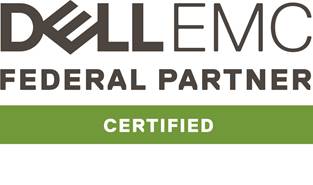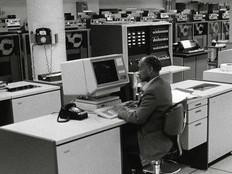How Agencies Can Accelerate IT Modernization on the Ground
The latest scorecards measuring agencies’ progress in meeting the mandates of the Federal Information Technology Acquisition Reform Act showed that 11 of the 24 agencies received lower grades since the last scorecard was released in November, and none got the top mark of A.
Many of the agencies saw their grades, which were released in late May, slide due in part to three measures, as FedScoop notes: their ability to track their use of software licenses, ensure agency CIOs report to department secretaries or their deputies, and establish working capital funds authorized by the Modernizing Government Technology Act. Some CIOs disputed aspects of the grades, with Agriculture Department CIO Gary Washington saying the scorecard’s current grade on the agency’s IT investment portfolio is not “reflective of the progress we’ve made.”
Agencies will likely continue to make progress in shuttering data centers, tracking software and modernizing IT. However, there are some actions they can take to spur progress, and some stumbling blocks Congress and the Trump administration can take out of their way, says Steve Harris, senior vice president and general manager of Dell EMC Federal.
If agencies want to not just get better FITARA scorecard grades but actually upgrade their IT to more modern architectures, they need to accelerate their data center optimization and consolidation efforts, Harris says. Congress also needs to stop funding agencies via continuing resolutions, and agencies need more stable IT leadership, he argues.
SIGN UP: Get more news from the FedTech newsletter in your inbox every two weeks!
How to Accelerate Data Center Modernization
A key element of the FITARA scorecard is measuring agencies’ progress on implementing the Data Center Optimization Initiative. The scorecard notes that 17 agencies saw their DCOI grades stay the same, five improved and two saw declines. Only four agencies received A grades.
Improving data center optimization and consolidation will help agencies “make a ton of progress across the board,” especially if they embraced hyperconverged infrastructure (HCI) and software-defined data centers (SDDCs) Harris tells FedTech.
“The quicker we can get to those implementations of real, modern IT, the better,” he says. “You will be killing two or three birds with one stone.”
By retiring legacy data center platforms and embracing automation, agencies can meet DCOI’s goals of smaller data center footprints and also repurpose IT personnel to focus on higher-value IT projects than monitoring a data center.
“It’s a big key to moving forward on a revolutionary rather than an evolutionary basis,” Harris says. “Everybody has got their toes, if not their whole foot, in there right now. It’s time to jump in.”
Harris estimates that only about 5 to 20 percent of federal workloads are currently run via SDDCs. More needs to be done to accelerate adoption of these technologies. “We have to get many more modernization projects in production right now, a bunch of them simultaneously,” he says.
Adoption of HCI is doubling year over year in the federal market, but only from a small base, Harris says. “We’re still barely scratching the surface as it pertains to the” roughly $80 billion annual federal IT budget. “The bulk of IT still needs to be modernized,” he says.
In order to get more modernization projects in production simultaneously, Harris advises agencies to more broadly adopt agile software development and develop cloud-native applications that can be easily moved to virtualized environments.
Agencies now have until Oct. 1, 2020, to meet DCOI deadlines, but what Harris described is a multiyear process. “If you are going to have a meaningful proportion of your IT hosted” in the cloud or virtualized environments by that deadline, he says, “you need an awful lot of projects.”
The Role of Congress and Agency IT Leadership in Modernization
Upgrading IT on a massive scale is difficult to pull off in the best conditions. Harris says it’s especially difficult for agencies to do when Congress keeps appropriating money for agencies via continuing funding resolutions instead of the normal appropriations process (there are usually 12 separate appropriations bills.)
“You can’t start a net-new project under a continuing resolution,” Harris says. “You are kind of stuck just continuing projects” that were previously funded. Agencies may have some transformational IT projects teed up, he notes, but they’re waiting to get proper appropriations to start them.
“It doesn’t feel like everybody has their money across the agencies,” he says.
Noting that the fiscal year ends Sept. 30, Harris says that Congress is just now starting to move on appropriations for fiscal year 2019. Having all of the appropriations bills signed into law by Oct. 1 would help move IT modernization projects along, according to Harris.
Agencies have also been hamstrung by significant turnover in IT leadership and “gaps in the command chain,” Harris says. There are still five agencies with acting CIOs on the federal CIO Council. “It slows down appropriations and decision-making,” Harris says.
Additionally, some CIOs who are permanent are still relatively new to the top job.
However, Harris has seen some forward momentum. “We’re a lot further along than we have been at any other time in the last 15 to 16 months,” he says. “I see everybody picking up steam now.”
IT modernization is a long-term endeavor that requires a lot of coordination and effort, Harris says. “It’s not like you can unscrew an incandescent lightbulb” and pop in an LED bulb.
“These projects we’re asking people to take on involve impacts on the end user,” he says. “It requires investment. If you are waiting to apply for money from the MGT Act, you have to hope your project is selected and that you get money.
You need to have a contingency plan around self-funding.”

Federal agencies are at the crossroads of mandate and mission; eager to modernize IT, but still struggling to maintain legacy systems. Directives like the Federal Information Technology Acquisition Reform Act (FITARA) provide a framework for moving ahead, but only Dell has the tools to help agencies build a new architecture and make the transition seamlessly.








